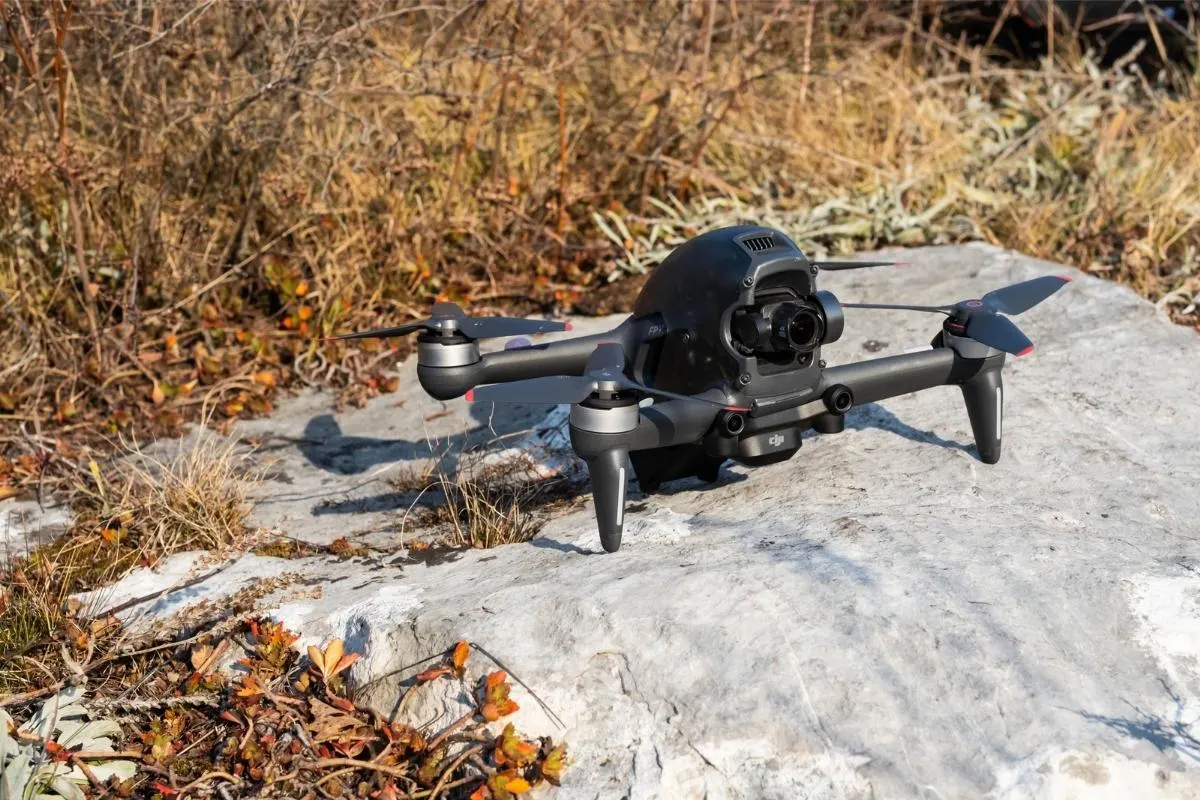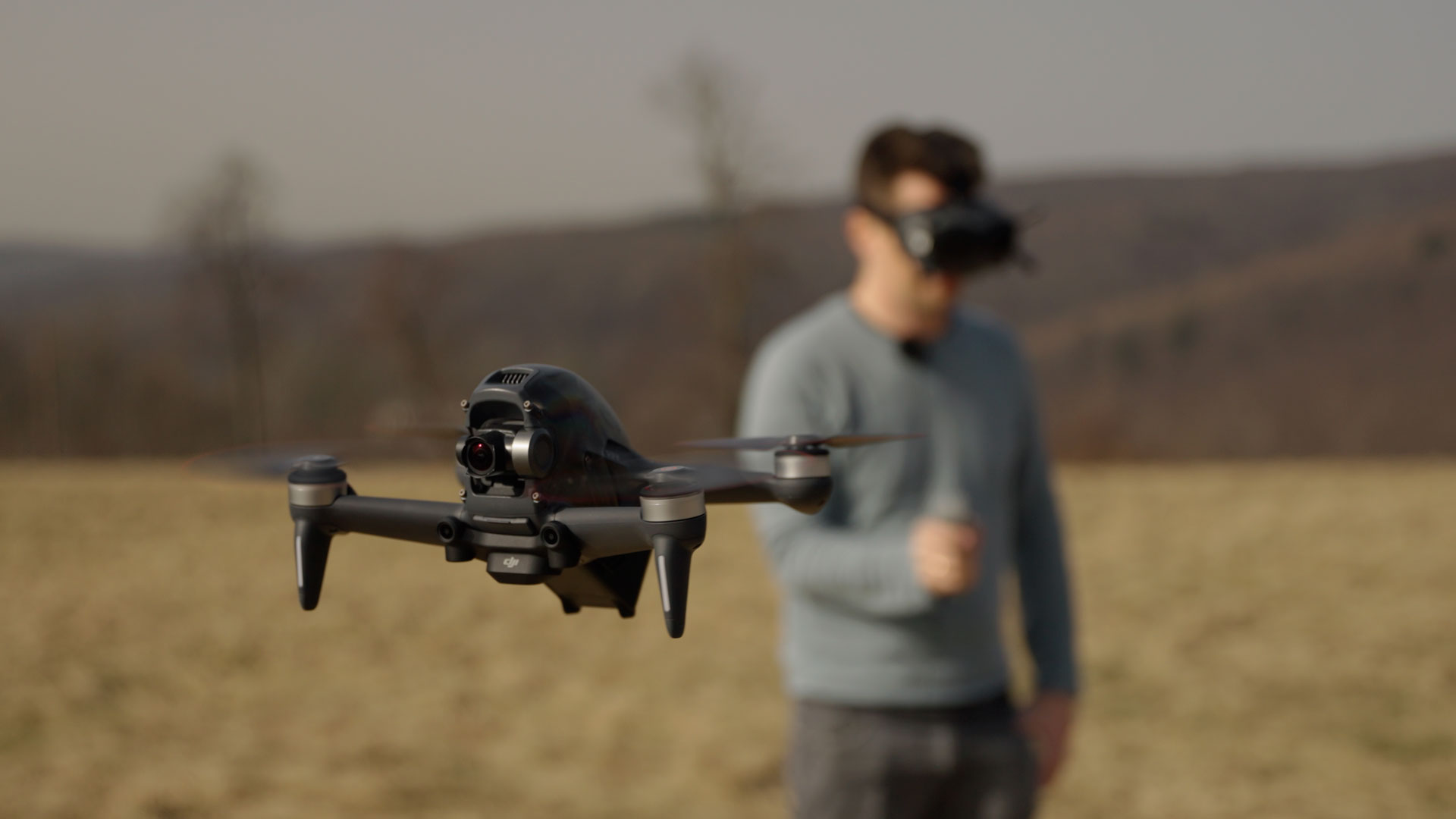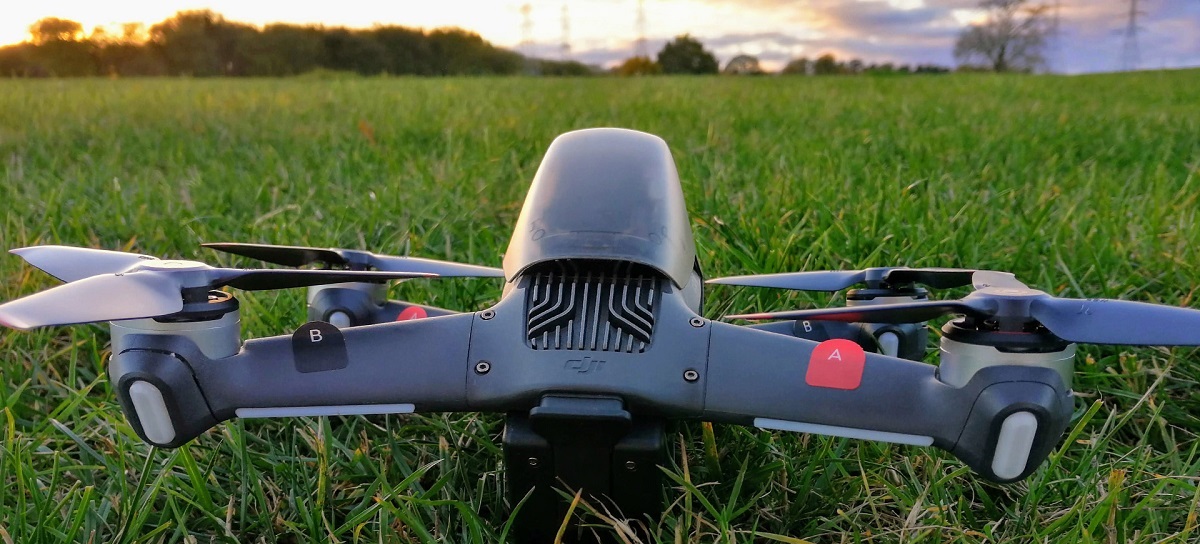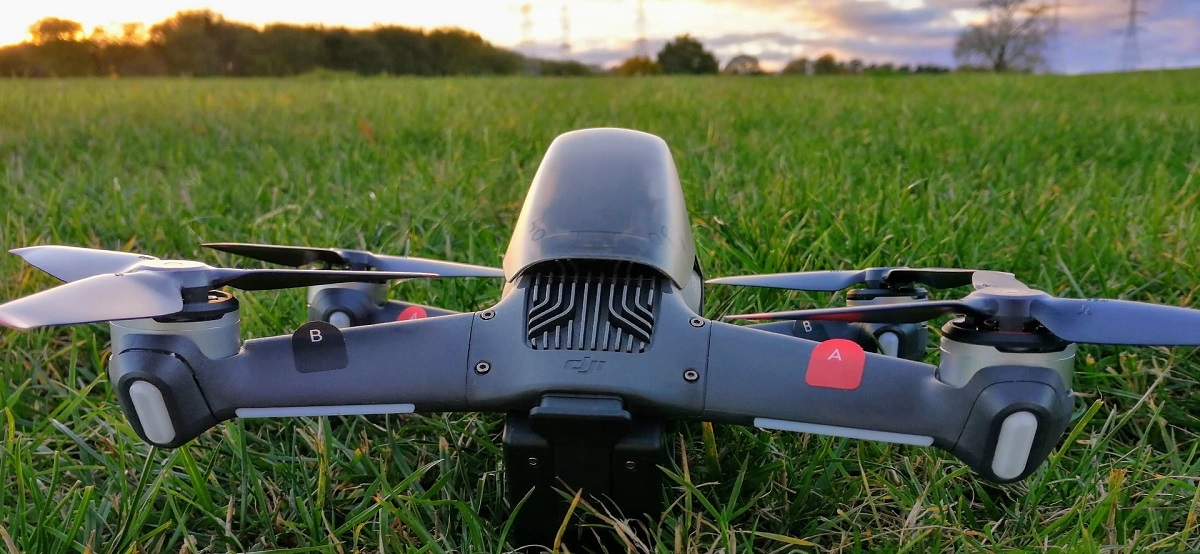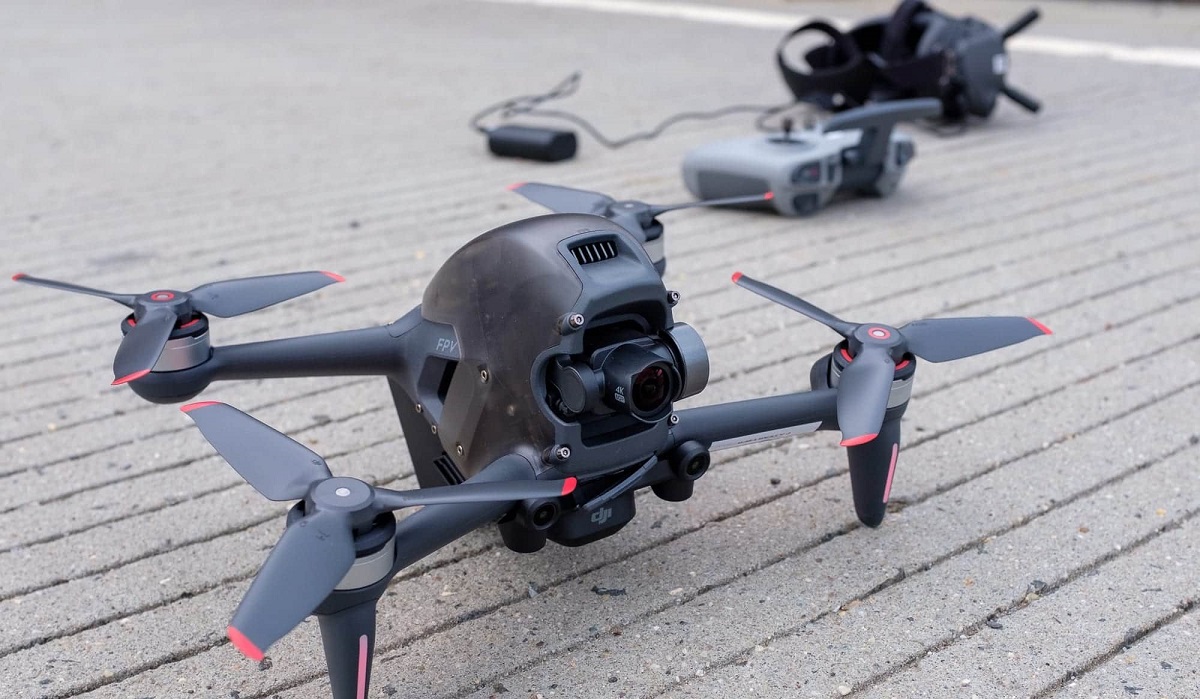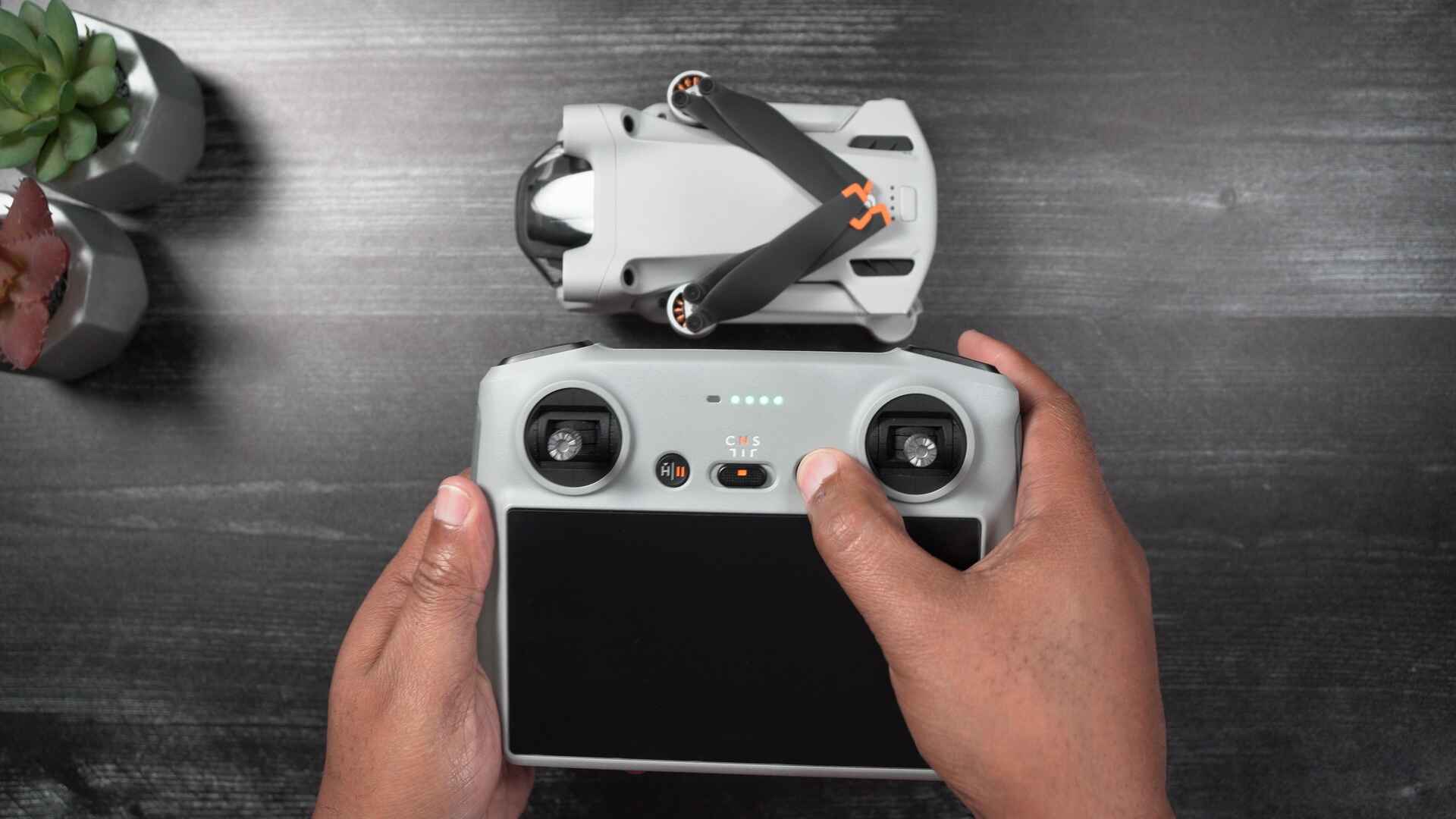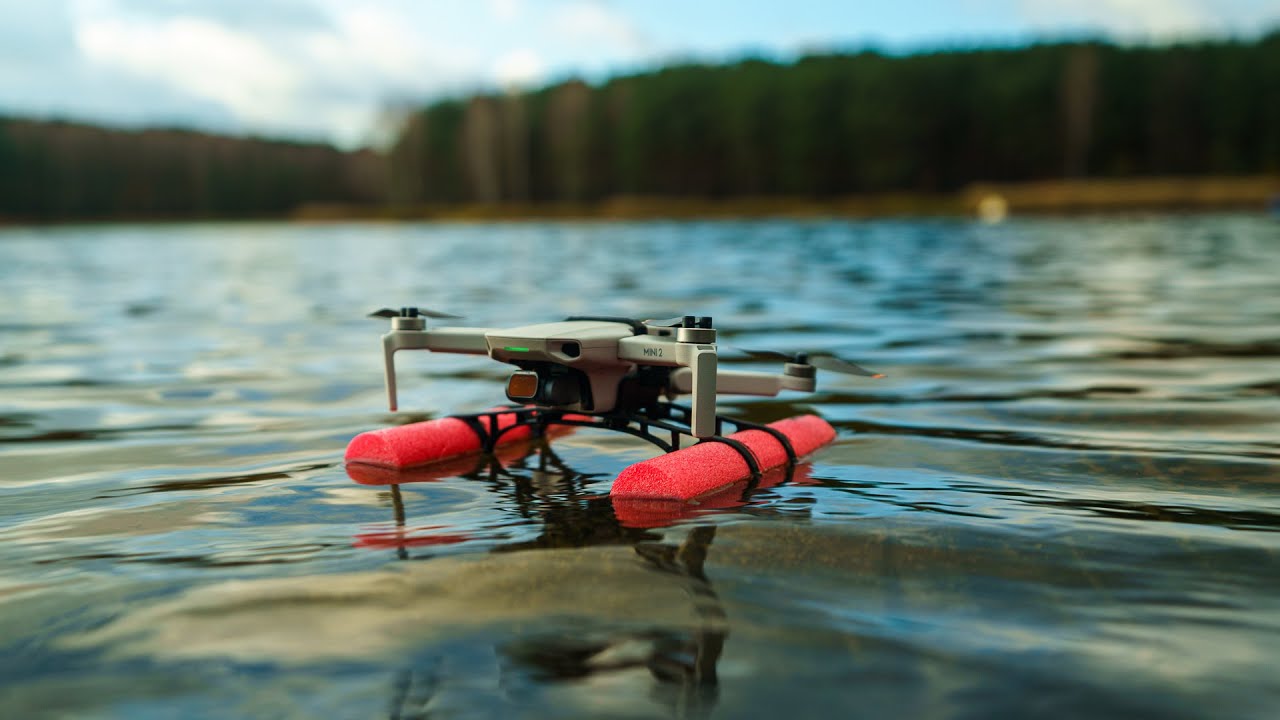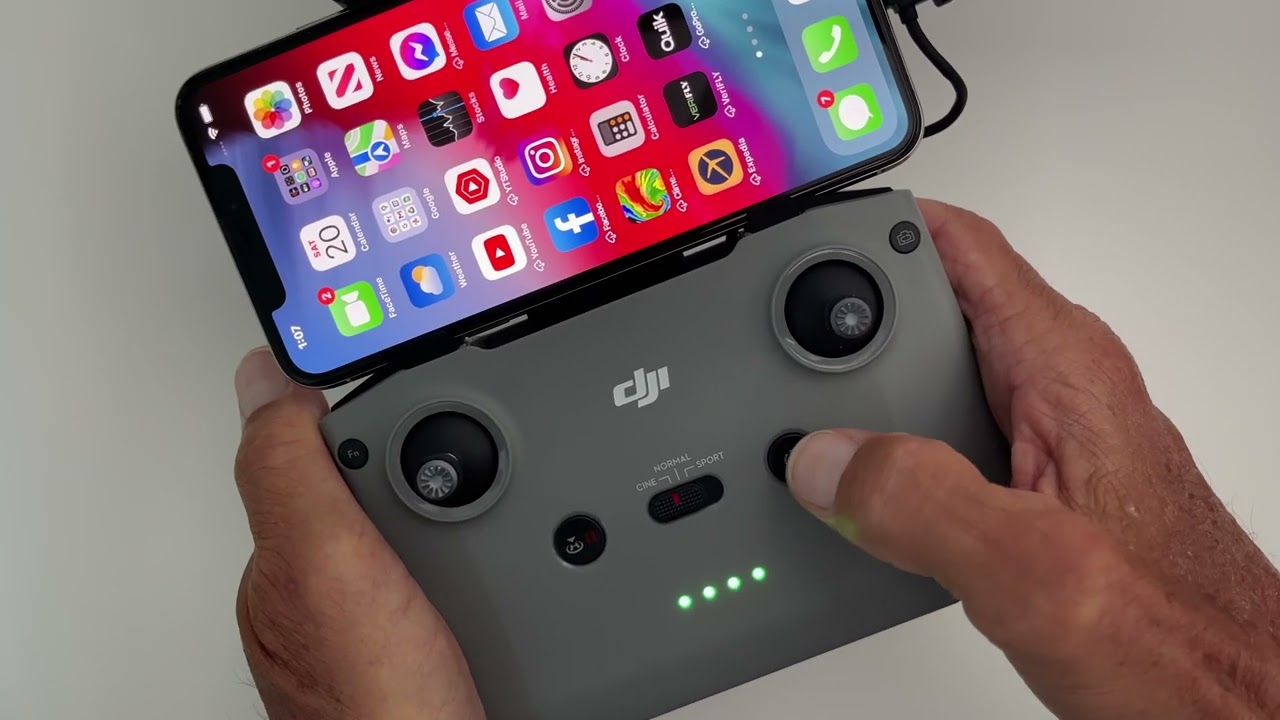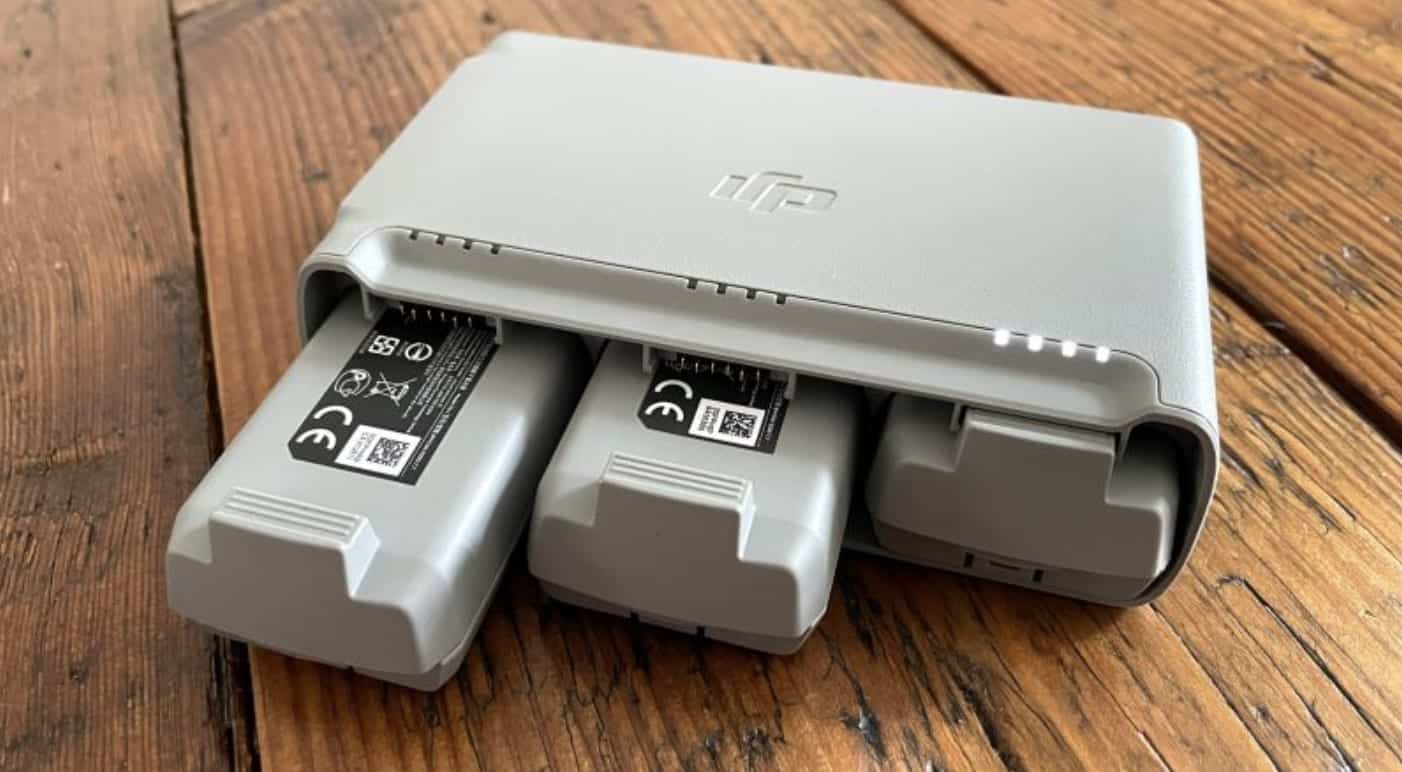Introduction
Welcome to the exciting world of DJI FPV drones! Whether you are an aspiring pilot looking to experience the thrill of high-speed flight or a professional filmmaker seeking to capture stunning aerial footage, the DJI FPV drone is a game-changer in the industry. In this guide, we will take you through the essential steps to help you land your very own DJI FPV drone successfully.
The DJI FPV drone combines the experience of First Person View (FPV) flying with the reliability and advanced features that DJI is known for. It offers an immersive flying experience, allowing you to see the world from a whole new perspective. However, flying a DJI FPV drone requires knowledge, skill, and careful preparation to ensure a safe and enjoyable flight.
Before diving into the specifics of landing techniques and troubleshooting tips, it’s crucial to gain a solid understanding of the DJI FPV drone. Familiarize yourself with its features, specifications, and flight modes to make the most of your flying experience. With its powerful propulsion system, intelligent flight modes, and high-definition camera capabilities, the DJI FPV drone opens up endless creative possibilities.
Preparation is the key to success when it comes to flying a DJI FPV drone. Before taking off, it’s important to go through a thorough pre-flight checklist. This includes checking the battery level, ensuring all propellers are securely attached, and confirming that the remote controller is properly connected to both the drone and your mobile device.
Once you’ve completed the pre-flight preparations, it’s time to take off and hover. Mastering the basics of takeoff and hovering is essential for a smooth flight experience. Understanding the controls, throttle management, and maintaining a steady altitude will allow you to gain confidence as you navigate the skies.
As you become more comfortable with basic flight maneuvers, you can start exploring the full potential of the DJI FPV drone. Execute daredevil flips and rolls, fly through challenging obstacles, and capture breathtaking footage with precise control. Remember to always practice in an open and safe area away from people, buildings, and other potential hazards.
Landing the DJI FPV drone is a critical skill to master. Whether you’re preparing for a smooth landing on the ground or catching the drone mid-air, proper technique and situational awareness are essential to avoid any mishaps. We will cover various landing techniques in detail to ensure you can safely bring your drone back to the ground.
It’s not uncommon to encounter challenges and hiccups while flying the DJI FPV drone. However, with the right troubleshooting tips and a calm mindset, you can overcome these hurdles and continue enjoying your flying experience. We will provide solutions to common issues such as connectivity problems, signal interference, and emergency situations.
So, get ready to elevate your aerial adventures with the DJI FPV drone. By following the guidelines and tips outlined in this guide, you’ll be well-equipped to navigate the skies, capture stunning visuals, and safely land your drone. Let’s embark on this thrilling journey together!
Understanding the DJI FPV Drone
The DJI FPV drone is a cutting-edge flying machine that combines the exhilaration of First Person View (FPV) flight with the reliability and advanced technology that DJI is famous for. It offers an immersive flying experience like no other, allowing you to see the world from a whole new perspective. To fully harness the capabilities of the DJI FPV drone, it’s essential to understand its features, specifications, and flight modes.
First and foremost, let’s delve into the design and build of the DJI FPV drone. It features a sleek and aerodynamic design that maximizes stability and reduces drag, enabling high-speed flight. The quadcopter configuration with four powerful brushless motors provides the necessary propulsion for agile maneuvers and thrilling acrobatics.
A key feature of the DJI FPV drone is its high-definition imaging system. Equipped with a 4K/60fps camera and a 150° ultra-wide-angle lens, it ensures crisp and vivid footage even during fast-paced flights. Additionally, the RockSteady stabilization technology minimizes vibrations and maintains smooth video recording, allowing you to capture stunning visuals with ease.
When it comes to flight modes, the DJI FPV drone offers a range of options to suit different skill levels and flying styles. The Normal mode provides a more traditional flying experience with self-leveling capabilities, ideal for beginners who are new to FPV drones. The Sport mode unlocks the full potential of the drone, enabling faster speeds and more aggressive maneuvers for experienced pilots. The Manual mode offers complete control over the aircraft, allowing pilots to perform complex aerial stunts and freestyle tricks.
In addition to these flight modes, the DJI FPV drone features intelligent flight assist functions to enhance safety and simplify flight operations. The GPS module ensures precise positioning, allowing for accurate and stable hovering. The obstacle sensing system detects and avoids obstacles in real-time, reducing the risk of collisions. Moreover, the Return-to-Home function automatically brings the drone back to its takeoff point in case of signal loss or low battery.
To provide an immersive flying experience, the DJI FPV drone includes the FPV Goggles V2. These goggles offer an ultra-low latency video transmission, allowing you to see the live feed from the drone’s camera in real-time. With the goggles on, you feel as if you are inside the cockpit, navigating the drone through the skies.
Understanding the DJI FPV drone’s features, specifications, and flight modes is crucial to unlocking its full potential. As you become familiar with its capabilities, you can push the boundaries of aerial cinematography, perform jaw-dropping acrobatics, and create cinematic masterpieces from a unique perspective. So, strap on your goggles and get ready to embark on an extraordinary flight with the DJI FPV drone.
Pre-flight Preparation
Before taking to the skies with your DJI FPV drone, it’s essential to go through a thorough pre-flight preparation to ensure a safe and successful flight. Following a checklist and conducting necessary checks will help you identify any issues or potential risks before takeoff.
The first step in pre-flight preparation is to check the battery level of both the drone and the remote controller. Make sure they are sufficiently charged to complete your intended flight and have spare batteries on hand if needed. It’s also crucial to inspect the batteries for any signs of damage or wear.
Next, examine the DJI FPV drone for any physical damage or loose components. Check that all propellers are securely attached and not damaged. Look for any cracks or deformities on the frame or landing gear. Also, inspect the gimbal and camera assembly for proper alignment and functionality.
Ensure that the DJI FPV goggles are in good working condition and the lenses are clean and free from scratches. Check all the cables and connectors for any signs of wear or damage.
Before powering up the drone, ensure that the remote controller is properly connected to both the drone and your mobile device. This will allow you to access and control the drone’s various settings and flight modes. It’s important to have a stable and reliable connection for a smooth flying experience.
Once all the physical checks are complete, it’s time to verify the software and firmware status of the DJI FPV drone. Make sure that both the drone and the remote controller have the latest firmware updates installed. Up-to-date firmware ensures optimal performance, added features, and improved safety.
Before taking off, check the weather conditions and ensure they are suitable for flying. Avoid flying in strong winds, rain, or low visibility conditions. It’s also important to follow local regulations and guidelines for drone flight in your area.
Finally, familiarize yourself with the flight environment. Identify any potential obstacles, such as trees, power lines, or buildings, that could interfere with your flight path. Choosing an open and unobstructed area for takeoff and landing will minimize the risk of accidents and collisions.
By conducting a thorough pre-flight preparation, you minimize the chances of encountering issues or accidents during your DJI FPV drone flight. Taking the time to check the battery, inspect the drone for damage, ensure proper connectivity, update firmware, assess the weather conditions, and survey the flight environment will contribute to a safe and enjoyable flying experience.
Takeoff and Hovering
Mastering the takeoff and hovering process is crucial for a smooth and controlled flight with your DJI FPV drone. Whether you’re a beginner or an experienced pilot, understanding the techniques and controls involved will help you confidently navigate the skies.
Before taking off, make sure you are in an open and safe area, away from people, buildings, and other obstacles. Ensure that the DJI FPV drone is properly calibrated and connected to the remote controller and the DJI Fly app on your mobile device.
To initiate takeoff, follow these steps:
- Ensure that the drone is powered on, and the propellers are securely attached.
- Place the drone on a level surface, ensuring that the landing gear is free from any obstructions.
- Hold down the takeoff/landing button on the remote controller until the drone starts its motors.
- Slowly increase the throttle stick to lift the drone off the ground. Be gentle and apply smooth and gradual throttle movements.
As the drone lifts off, maintain a steady ascent and keep an eye on the altitude readings displayed on the remote controller or the DJI Fly app. Aim for a smooth and controlled takeoff, gradually increasing the altitude while maintaining a stable hover.
Hovering is an essential skill to master, as it allows you to maintain a stable position in the air. To hover effectively with your DJI FPV drone, follow these tips:
- Use subtle stick movements to adjust the drone’s position. Start with small adjustments and gradually increase as needed.
- Utilize the altitude hold feature to maintain a consistent height. This feature makes it easier to focus on the drone’s lateral movements while keeping a steady altitude.
- Keep an eye on the drone’s orientation by using the FPV goggles or observing the visual cues from the camera feed. This will help you determine the drone’s position and adjust accordingly for better control.
- Pay attention to the wind conditions. Wind can affect the stability of the drone, so make small corrections to maintain a stable hover.
Remember to practice takeoff and hovering in a controlled environment until you are comfortable with the controls and confident in your abilities. As you gain experience, you can start exploring the various flight modes and executing more advanced maneuvers with the DJI FPV drone.
By mastering the takeoff and hovering techniques, you’ll be able to embark on thrilling flights and capture incredible footage with your DJI FPV drone. Practice regularly to sharpen your skills and build confidence in controlling the aircraft, and soon you’ll be ready to explore the skies with unparalleled freedom and excitement.
Basic Flight Maneuvers
Once you have mastered the takeoff and hovering, it’s time to explore the exciting world of basic flight maneuvers with your DJI FPV drone. These maneuvers will allow you to fly confidently, perform precise movements, and capture stunning cinematic shots. Whether you’re a beginner or an experienced pilot, understanding and practicing these maneuvers will enhance your flying skills and take your aerial adventures to new heights.
Here are some essential flight maneuvers to master:
Forward and Backward Flight:
Start by flying your DJI FPV drone forward in a straight line. Use gentle stick movements to control the speed and maintain a steady course. Practice flying at different speeds and experiment with tilt angles to capture dynamic footage. Once comfortable with forward flight, practice flying the drone backward using the same techniques.
Turning and Banking:
Turns and banks add fluidity and style to your flights. To perform a turn, use the yaw stick to rotate the drone left or right. Gradually increase the angle of the turn to execute smooth and controlled movements. For more dynamic turns, initiate a bank by smoothly tilting the drone to the side while turning. This technique is great for creating cinematic shots and following subjects.
Ascending and Descending:
Practice ascending and descending with your drone to explore different altitude levels. Increase throttle gradually to ascend and decrease throttle to descend. Maintain a steady rhythm, and be mindful of your drone’s position and altitude readings. Ascending and descending effectively will allow you to capture aerial shots from different perspectives and add depth to your footage.
Orbiting:
Orbiting is a popular maneuver that adds creativity and complexity to your flights. To perform an orbit, choose a point of interest and fly a circle around it. Adjust the radius of the circle by controlling the distance between the drone and the point of interest. Once you master orbiting, you can experiment with different speeds and angles to achieve unique and mesmerizing shots.
Hovering Transitions:
Hovering transitions involve moving the drone from one stationary hover to another. Start by hovering in one position, then smoothly translate the drone horizontally or vertically to another position while maintaining a stable hover. This maneuver allows you to capture seamless transitions between different shots and perspectives.
Take your time to practice these basic flight maneuvers in an open and safe area, gradually increasing your confidence and skill level. As you become more comfortable, you can combine these maneuvers to create more complex flight sequences and capture breathtaking aerial footage.
Remember to always maintain situational awareness, respect local regulations, and prioritize the safety of yourself and others. With practice and dedication, you’ll be able to unleash the full potential of your DJI FPV drone and embark on thrilling flights that push the boundaries of creativity.
Landing Techniques
Landing your DJI FPV drone safely and smoothly is a critical skill that every pilot should master. Whether you’re landing on the ground or catching the drone mid-air, proper technique and situational awareness are essential to avoid mishaps and ensure a controlled descent. Here are some landing techniques to follow:
Ground Landing:
When landing your DJI FPV drone on the ground, follow these steps:
- Choose a suitable landing area, free from obstacles and obstructions.
- Gradually reduce the throttle to descend the drone to the ground.
- As the drone gets closer to the ground, decrease the throttle further to slow down the descent and achieve a soft landing.
- Once the drone touches down, reduce the throttle to zero to ensure the propellers come to a complete stop.
Remember to maintain control of the drone during the landing. Be attentive to any wind or gusts that may affect your descent, and make necessary adjustments to ensure a safe landing.
Mid-Air Catch:
If you prefer to catch the DJI FPV drone mid-air rather than landing it on the ground, follow these steps:
- Ensure that you have practiced mid-air catches in a safe and controlled environment.
- Pick an open area free from obstacles and away from people.
- Hover the drone at a comfortable height and maintain a steady hover.
- Position your hands in a way that allows you to securely grab the drone from the bottom without obstructing the propellers.
- Once you’re ready, firmly and confidently grab the drone and carefully bring it down to a safe location.
Catching the drone mid-air requires coordination and precision. Practice this technique with caution, ensuring you can safely and confidently handle the drone during the catch.
Emergency Landings:
In cases of emergency or if you encounter any issues during flight, it may be necessary to perform an emergency landing. Here are some steps to follow:
- Maintain control and assess the situation calmly and quickly.
- Look for a suitable landing area away from people, vehicles, and other potential hazards.
- Gradually reduce the throttle to descend the drone towards the landing area.
- Monitor the descent carefully and make necessary adjustments to ensure a safe landing.
- Once the drone is safely on the ground, reduce the throttle to zero to stop the propellers.
Emergency landings require swift decision-making and the ability to stay calm under pressure. Practice emergency procedures in simulated scenarios to prepare for unexpected situations.
By practicing these landing techniques and maintaining a focused and controlled approach, you’ll improve your landing skills and minimize the risk of accidents or damage to your DJI FPV drone. Remember, safety is paramount, so always prioritize the well-being of yourself, others, and your equipment during landing procedures.
Troubleshooting Tips
While flying your DJI FPV drone, you may encounter certain challenges or technical issues. Whether it’s connectivity problems, signal interference, or emergency situations, it’s important to stay calm and follow these troubleshooting tips to quickly resolve any issues and continue enjoying your flight:
1. Connectivity Issues:
If you experience connectivity problems between the drone and the remote controller or the DJI Fly app, try the following:
- Ensure that the remote controller and the drone are properly connected and paired.
- Check that the antennas on both the remote controller and the drone are fully extended and pointing in the right direction.
- Move to an open area with fewer obstructions to improve signal reception.
- Power off and restart both the drone and the remote controller.
2. Signal Interference:
In environments with high signal interference, the performance of your DJI FPV drone may be affected. Here’s how to reduce signal interference:
- Stay away from areas with strong magnetic fields, power lines, and radio transmitters.
- Avoid flying near crowded Wi-Fi networks or in locations where multiple drones are being operated simultaneously.
- Attempt to change the channel or frequency of your drone’s wireless transmission system to avoid congested frequencies.
3. Emergency Situations:
In critical situations such as low battery, loss of control, or unexpected obstacles, here are some emergency procedures to follow:
- Keep a cool head and assess the situation quickly.
- Activate the Return-to-Home (RTH) function if available to bring your drone back to its takeoff point.
- Use obstacle avoidance systems and sensors to navigate around potential hazards.
- If necessary, perform an emergency landing in a safe area away from people and property.
4. Firmware and Software Updates:
Regularly check for firmware updates for your drone, remote controller, and DJI Fly app. Keeping the firmware and software up to date ensures optimal performance, improved features, and enhanced safety.
5. Battery Management:
Proper battery management is essential for a successful flight. Follow these tips:
- Start with fully charged batteries and monitor the remaining battery level during flight.
- Avoid flying in extremely hot or cold temperatures, as they can affect battery performance.
- Allow the battery to cool down for a few minutes between flights to prolong its lifespan.
- Follow the manufacturer’s guidelines for battery storage and charging to maintain battery health.
By implementing these troubleshooting tips, you can quickly overcome common issues and ensure a smooth and enjoyable flying experience with your DJI FPV drone. It’s important to stay informed, follow best practices, and troubleshoot with caution to mitigate any unforeseen situations that may arise during flight.
Conclusion
Congratulations! You’ve now learned the essential techniques and skills to successfully navigate and operate your DJI FPV drone. By understanding the drone’s features, performing pre-flight preparations, mastering takeoff and hovering, executing basic flight maneuvers, and utilizing proper landing techniques, you can confidently take to the skies and capture breathtaking aerial footage.
Remember to always prioritize safety throughout your flying experience. Familiarize yourself with local regulations and guidelines, choose open and safe flying areas, and stay aware of potential obstacles or hazards that may affect your flight. Additionally, regularly update the firmware and software of your drone, remote controller, and DJI Fly app to ensure optimal performance and take advantage of the latest features and improvements.
Flight is a continuous learning process, and with practice and experience, you’ll become a skilled pilot who can master challenging maneuvers and capture stunning creative shots. As you gain confidence, don’t be afraid to experiment and unleash your creativity while exploring the endless possibilities that your DJI FPV drone offers.
Remember, troubleshooting is part of the journey. If you encounter any issues, follow the troubleshooting tips provided to resolve them quickly and efficiently. Stay calm and composed, and never hesitate to seek assistance or consult the DJI support team for any major concerns.
Now, it’s time to take flight and experience the thrill of piloting your DJI FPV drone. So get out there, push your limits, and capture stunning visuals from a perspective previously untouched. Embrace the freedom and excitement that comes with flying a high-performance drone, and let your creativity soar in the vast expanse of the sky. Happy flying!







